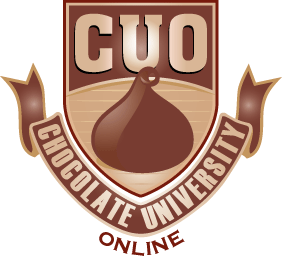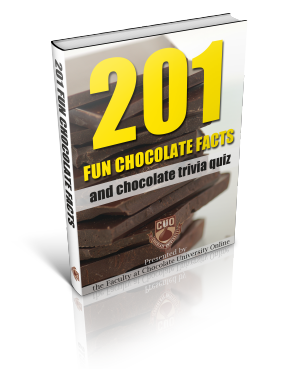Sacred Gifts, Profane Pleasures: A History of Tobacco and Chocolate in the Atlantic World Reviews
Sacred Gifts, Profane Pleasures: A History of Tobacco and Chocolate in the Atlantic World
Before Columbus’s fateful voyage in 1492, no European had ever seen, much less tasted, tobacco or chocolate. Initially dismissed as dry leaves and an odd Indian drink, these two commodities came to conquer Europe on a scale unsurpassed by any other American resource or product. A fascinating story of contact, exploration, and exchange in the Atlantic world, Sacred Gifts, Profane Pleasures traces the ways in which these two goods of the Americas both changed and were changed by Europe.
Focusing on the Spanish Empire, Marcy Norton investigates how tobacco and chocolate became material and symbolic links to the pre-Hispanic past for colonized Indians and colonizing Europeans alike. Botanical ambassadors of the American continent, they also profoundly affected Europe. Tobacco, once condemned as proof of Indian diabolism, became the constant companion of clergymen and the single largest source of state revenue in Spain. Before coffee or tea became popular in Europe, chocolate was the drink that energized the fatigued and uplifted the depressed. However, no one could quite forget the pagan past of tobacco and chocolate, despite their apparent Europeanization: physicians relied on Mesoamerican medical systems for their understanding of tobacco; theologians looked to Aztec precedent to decide whether chocolate drinking violated Lenten fasts.
The struggle of scientists, theologians, and aficionados alike to reconcile notions of European superiority with the fact of American influence shaped key modern developments ranging from natural history to secularization. Norton considers the material, social, and cultural interaction between Europe and the Americas with historical depth and insight that goes beyond the portrayal of Columbian exchange simply as a matter of exploitation, infection, and conquest.
List Price: $ 24.95
Price:
The Hershey’s Milk Chocolate Bar Fractions Book
The Hershey’s Milk Chocolate Bar Fractions Book
A Hershey’s bar is made up of 12 little rectangles, making it the perfect edible tool for teaching fractions!
List Price: $ 5.99
Price:
Find More Learn About Chocolate Products
Chocolate The Newest Health Food
You may have already heard that chocolate contains beneficial flavonoids and antioxidants. Flavonoids are naturally-occurring compounds found in plant foods that are full of recognized health benefits. There are more than 4,000 flavonoid compounds, which are a subgroup of a large class called polyphenols. Phenols are believed to help reduce the risk of heart disease by helping prevent atherosclerosis. The flavanols in chocolate appear to help the body use nitric oxide, which is crucial for healthy blood flow and blood pressure, which means that chocolate might help reduce hypertension as well.
Red wine is known for its high phenol content, but an average bar of dark chocolate contains more phenols than 8 ounces of red wine. Scientists at Cornell University and Seoul National University examined the cancer-fighting antioxidant content of hot cocoa, red wine, and tea, and found that cocoa had nearly double the antioxidants of red wine and four to five times more than tea.
Holland’s National Institute of Public Health and Environment found that dark chocolate contains 53.5 mg of catechins per 100 grams. (Catechins are the powerful antioxidants that fight against cancer and help prevent heart disease). By contrast, a cup of black tea contains only about 14 mg of catechins and green tea has about 30 mg of catechins.
A study at University of California Davis found that participants who ate chocolate showed a reduction in platelet activity. This means that chocolate has an anti-clotting, blood-thinning effect that can be compared to aspirin.
A Harvard University study of 8,000, with an average age of 65, revealed that those who consumed chocolate lived almost a year longer than those who did not. Those who ate one to three candy bars per month had a 36 percent lower risk of death (compared to the people who ate no candy), while those who ate three or more candy bars per week had a 16 percent lower risk.
A study of older men in The Netherlands, known for its chocolate, showed that those who ate the most chocolate, an equivalent of one-third of a chocolate bar every day, had lower blood pressure and a 50 percent lower risk of death. The researchers also noted the men eating the most cocoa products were not heavier or bigger eaters than the men who ate less cocoa.
And it’s not just dark chocolate that is the only healthy type of chocolate. Most studies talk about the benefits of dark chocolate, but some of the most recent news about chocolate includes good news for milk chocolate lovers, who have been left out in the past.
The Wheeling Jesuit University in West Virginia did a study that shows that milk chocolate seems to boost brainpower. The groups in the test consumed, on different occasions, milk chocolate, dark chocolate, carob and nothing. Then they were tested for cognitive performance including memory, attention span, reaction time, and problem solving.
According to Dr. Bryan Raudenbush, “Composite scores for verbal and visual memory were significantly higher for milk chocolate than the other conditions.” The study also found that consumption of milk and dark chocolate was associated with improved impulse control and reaction time. It seems that by consuming chocolate you get stimulating effects from substances found in chocolate, such as theobromine and phenylethylamine, which then lead to increased mental performance.
Chocolate really does make you feel good, too. It is known to stimulate the secretion of endorphins, producing a pleasurable sensation similar to the “runner’s high” a jogger feels after running several miles. Chocolate also contains a neurotransmitter, serotonin that acts as an anti-depressant. Studies in England show that even the aroma of chocolate gives a bout of euphoria and will help lift the spirits.
And now people are looking at chocolate for skin care. According to Marlies Spinale, director of Tru Spa, “Like many other antioxidants, cocoa polyphenols are thought to offer the skin protection from free-radical damage caused by sun, pollution, stress, alcohol consumption and other factors. I believe that we will hear more about the benefits of chocolate in skin care.”
Some people have been avoiding chocolate because one of the main ingredients of chocolate is cocoa butter. It was thought that it was an unhealthy fat, but actually cocoa butter is not unhealthy. It is made up of the beneficial fatty acids– oleic acid (a heart-healthy monounsaturated fat also found in olive oil), stearic and palmitic acids. Stearic and palmitic acids are healthy forms of saturated fat. Plus chocolate contains vitamins A, B1, C, D, and E, as well as potassium, sodium, and iron.
So go ahead and indulge in a little chocolate, in moderation of course. I would recommend that you try to find organic chocolate, and stick with darker chocolate because it has more chocolate flavonoids and less sugar. (Sugar weakens the immune system; so don’t consume sugar if you are ill.) And a little bit of milk chocolate is alright when you need an occasional milk chocolate brainpower boost, such as before a test. All you students take note!
Chocolate as a health food can life get any better?
Written by nickdivine
Music is my muse, I daydream a lot, I have O.C.D, I am a germ-a-phobe, I love to organize, I don’t like messy.
Categories: chocolate articles Tags: CHOCOLATE, Food, Health, Newest
Q&A: How to make chocolate flow smoothly in chocolate fountain?
Question by isle_gal123: How to make chocolate flow smoothly in chocolate fountain?
I recently bought a small chocolate fountain. I bought Belgian chocolate and heated it in microwave. I then mixed in a bit of canola oil to thin out the liquified chocolate. However, the chocolate still didn’t flow out as smoothly as I hoped. The chocolate dripped instead of looking tier-like. How do I make the chocolate flow more smoothly? Need all the help I can get as we’re using the fountain for a party this Saturday! Thanks!
Best answer:
Answer by kristi
you may need more oil. For really yummy flavor try using almond oil if you can find it. Also, instead of heating your chocolate in the microwave (which makes it burn and crack on the outside) you might want to use a double boiler. If you don’t have one, get one of those stainless steel mixing bowls and put the unmelted chocolate and oil in it. Place the bowl on top of pot of boiling water. This way the chocolate gets heated gently…just make sure you keep stirring so it doesn’t burn.
I learned this the hard way after ending up with “chunky” Chocolate fondue. Yikes!
Know better? Leave your own answer in the comments!
Categories: chocolate questions Tags: CHOCOLATE, flow, fountain, smoothly
Back to Basics CM300BR Cocoa-Latte Chrome 32-Ounce Hot-Drink Maker Reviews
Back to Basics CM300BR Cocoa-Latte Chrome 32-Ounce Hot-Drink Maker
- 600-watt hot-drink maker quickly and easily whips up delicious cafe-style beverages
- 32-ounce container with measurement markings and locking lid; nonstick heating surface
- Mixing paddle and dispensing valve; automatic shut-off function prevents over-heating
- 2-piece construction makes cleanup a snap; 35 recipes included
- Measures approximately 7-1/2 by 9 by 12 inches
The Cocoa Latte Hot Drink Maker brings the café experience into your home. Automatically heat, whip and mix instant cocoa, coffee and tea into frothy, café-style drinks. The auto shut off ensures that drinks won’t be overheated. The 32-ounce container, with a twist-and-lock lid and non-stick heating surface, is easy to clean. Includes 35 delicious hot drink recipes.
List Price: $ 44.99
Price:
Categories: chocolate products Tags: 32Ounce, Back, Basics, Chrome, CM300BR, CocoaLatte, HotDrink, Maker, Reviews
The Natural History of Chocolate (Illustrated)
The Natural History of Chocolate (Illustrated)
• The book includes 15 or more unique illustrations that are relevant to its content.
• This book provides all the relevant information about chocolate including its history, ways of production, recipes and many others.
• The book includes 15 or more unique illustrations that are relevant to its content.
• This book provides all the relevant information about chocolate including its history, ways of production, recipes and many others.
List Price: $ 0.99
Price:
Find More Chocolate History Products
Categories: chocolate products Tags: CHOCOLATE, History, Illustrated, Natural
Yes, Chocolate Tastes Good, but it is Very Toxic to Dogs!
In a previous article I mentioned several foods and substances that are unsafe to allow your dog to eat. Dogs don’t always know what is not good for them. Some substances they instinctively know to stay away from because of the smell and or taste. However other foods and substances may actually taste good. This article will focus on chocolate, and why it is harmful to your dog.
The ingredient in chocolate, theobromine, is toxic to dogs. Many years ago, before I knew that chocolate was toxic to dogs, I occasionally shared my M & M’s with my Chow / Labrador Mix. My dog, Frisky, was none the worse for it, as far as I knew. I know now that I was fortunate that my dog did not ingest enough of the theobromine from the milk chocolate in the M & M’s to cause any real harm.
Milk chocolate has 44 mg of theobromine per ounce, and on average it would take between 100 to 150 mg of the toxic substance to be harmful; however, the toxic level can go up or down, depending on the dog’s sensitivity, and the size of the dog.
All chocolates are not equal.
Chocolates come in different forms. White chocolate, is not really chocolate, but it is made from cocoa butter, and it does contain 1 mg of theobromine per ounce. Sweet cocoa has about 20 mg of theobromine per ounce. Milk chocolate is the sweetest. It also has the least theobromine. I mentioned above that milk chocolate contains 44 mg of theobromine per ounce. Semi-sweet chocolate, also known as dark chocolate contains 150 mg per ounce, and baker’s chocolate contains a whopping 390 to 450 mg per ounce. You can see by the number of milligrams per ounce how much more concentrated the toxic substance is in each type of chocolate. If your dog walked off with a few of your M & M’s you might not have anything to worry about, but on the other hand, if your Lassie or Laddie ate an ounce or two of baker’s chocolate you may have a very sick or dying dog on your hands if you don’t do something about it fast.
If you are cooking with baker’s chocolate make sure that you cut off what you need for your recipe, and then put the rest away out of your dog’s reach. You might not think your dog could reach up on a kitchen counter, but it happens quite often if you should have a food item too close to the edge of the counter.
It isn’t just chocolate candy you need to worry about your dog ingesting. Chocolate ice cream, chocolate toppings, chocolate milk, chocolate flavored cereals have different quantities of theobromine. These products have less of the toxic compound than plain chocolate, but your dog could still have a bad reaction to it depending on the size of the dog and its sensitivity to the substance.
Chocolate tastes good; if it gets a taste of chocolate, your dog will crave it, and beg for it every time it sees you eating it. If you lay your chocolate down unattended your dog will be a dog and happily gobble it up. Puppies and small dogs are most susceptible the chemical in chocolate.
What are the symptoms of chocolate poisoning?
If your dog has ingested enough chocolate to be toxic your dog may have increased urination; chocolate acts like a diuretic and will cause your dog’s kidneys to produce an excess amount of urine, which will lead to dehydration and an electrolyte imbalance. Chocolate toxicity will also cause gastrointestinal upsets, such as nausea, vomiting and diarrhea. From the time of ingestion to the time of toxic symptoms will be within a 2 to 4 hour period. If your dog is vomiting, the stomach contents will be the color of chocolate. If you suspect your dog has ingested chocolate and it is exhibiting these signs get your dog to a veterinarian quickly, because your dog may begin to shut down if advance signs of chocolate toxicity begin to manifest.
Advanced signs of chocolate poisoning.
Your dog may experience muscle stiffness, and twitching from the loss of electrolytes, due to frequent urination. Your dog may become irritable; touch, light and sound may cause extreme discomfort. Your dog may have hallucinations from the toxicity affecting the brain. Cardiac arrhythmias, and seizures may develop, followed by coma. Death can occur within 12 to 36 hours of ingestion of toxic amounts of chocolate.
If you discover that your dog has eaten chocolate, your veterinarian may direct you to begin first aid right away to induce vomiting. Be sure to tell the vet if latent signs of toxicity are apparent, because you only should induce vomiting if your dog has not gone into seizure activity, cardiac arrhythmia, and other symptoms of advanced toxicity.
How to induce vomiting.
Your veterinarian may tell you to give your dog a small amount of vanilla ice cream mixed with a combination of salt and hydrogen peroxide. Only do this when directed your dog’s veterinarian, because you will need to know how much hydrogen peroxide and salt to mix in with the ice cream. The ice cream is the vehicle to disguise the taste, because your dog will not take the treatment to induce vomiting easily if the taste is not disguised.
When your dog vomits, save a sample of it and bring it to the veterinarian’s office with you so that the sample can be tested for the presence of the toxin. Be sure to remain calm while you are trying to get your dog to vomit. If you are excited you will pass the anxiety onto your dog.
Prevention.
As mentioned earlier in this article, the way to prevent theobromine toxicity is to keep your dog away from chocolate. You may be tempted to share just a small piece of your chocolate bar with your beloved pet, but do not do it under any circumstances, because your dog will love the taste and want more. Once your dog has tasted chocolate your dog might do anything to get it, including stealing your M&M’s, if by accident, you should leave them unattended in reach of your dog.
Sources:
Ask the veterinarian: http://en.allexperts.com/q/Ask-Veterinarian-700/dog-ate-chocolate-1.htm
Dr{{PERIOD}} Kevin’s Advice: http://www.apogeevideo.com/index.php/Dr.-Kevin-s-Advice/
Squiddo: http://www.squidoo.com/dogschocolate
Written by CharleneCollins
Find More Chocolate Tasting Articles









